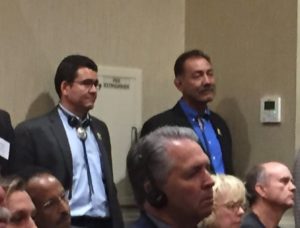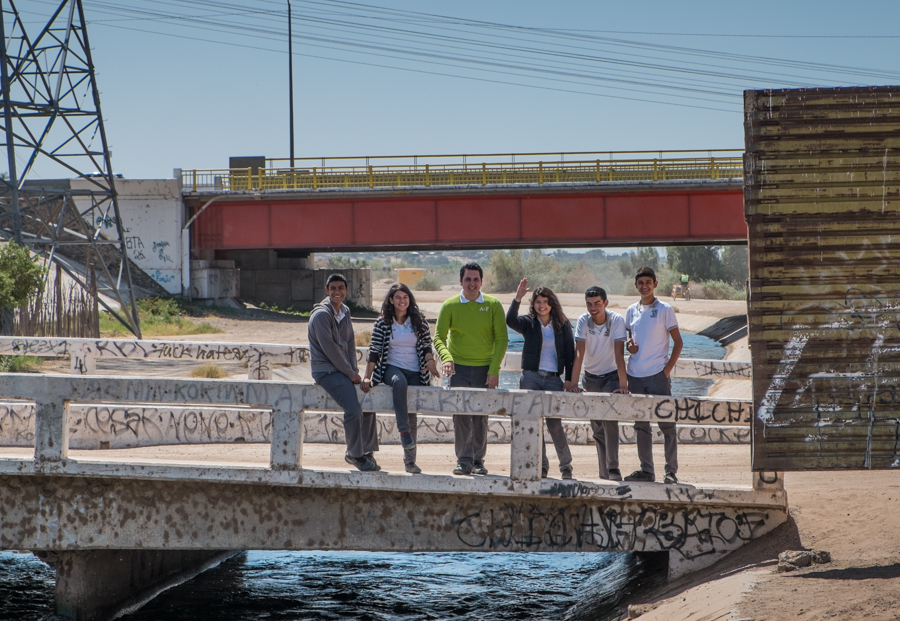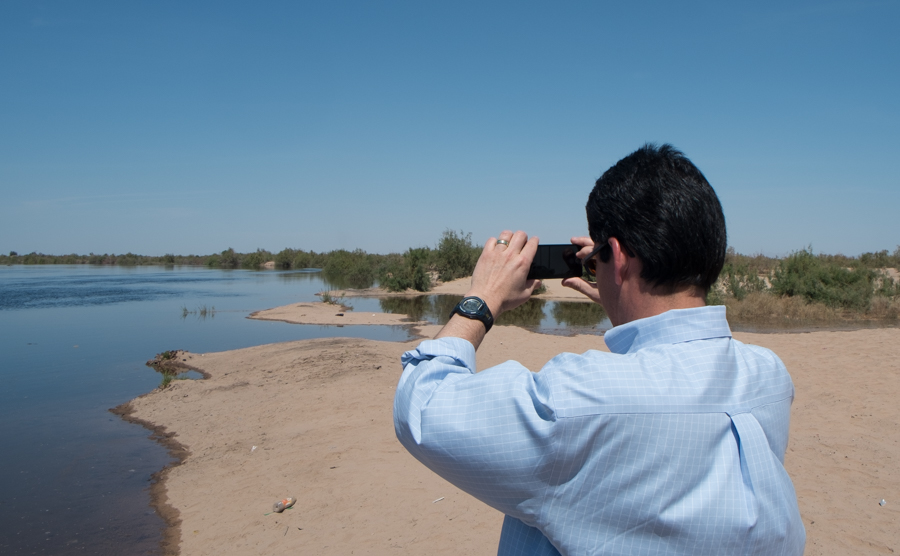In a recent paper in Water International, Jacob Petersen-Perlman and colleagues identified one of the central features scholars have found in their study of international water agreements:
Once institutional capacity is established between parties it has been proven to be resilient over time, even as conflict was being waged over other issues.
Sitting in an overcrowded hotel ballroom in Santa Fe, New Mexico, late yesterday afternoon, I was privileged to see that happen. In the midst of bellicose rhetoric about border walls and NAFTA trade battles, of “rapists” and “bad hombres”, representatives of the two nations’ border and water management community signed the final paperwork for the entry into force of a sweeping new Colorado River agreement.
The deal extends the core terms of “Minute 319”, a landmark agreement between the U.S. and Mexico that enabled a rich new suite of collaborative measures to managing the shared river – Mexican storage of water in U.S. reservoirs, shared surpluses and shortages, opportunities for U.S. water agencies to collaborate with their Mexican counterparts on conservation measures and a shared effort to restore water to the Colorado River Delta environment.
Two years of work by Obama administration folks and their Mexican counterparts had led to an near-agreement they came to call “Minute 32x” because of the quirks of the numbering system, but it didn’t quite get over the finish line before the change of administrations.

Former Deputy Secretary of the Interior Mike Connor, left, and former Reclamation Commissioner Estevan López, at Wednesday’s signing of the US-Mexico Colorado River agreement
Yesterday, despite the fears of many (including myself), we saw the agreement survive, as Petersen-Perlman put it, “conflict … being waged over other issues.” Here was the Trump administration’s new Deputy Secretary of the Interior David Bernhardt, standing at the podium before an international audience praising his predecessor, Obama administration Deputy Interior Secretary Mike Connor, who stood quietly leaning against the back wall.
Connor and Estevan López, his Commissioner of Reclamation during the final years of the Obama administration, stood together. They two of them had led a determined push in the months after the election to try to get the deal done before the new administration took office, amid fears that a souring U.S.-Mexico relationship might make a Colorado River agreement impossible.
When I got home last night, I spent some time scrolling back through a bunch of pictures I took on the morning of March 28, 2014, in the Colorado River Delta. I’d been down in the delta working on my book, and a chance meeting with Interior staff in the parking lot of the Hilton Garden Inn in Yuma led to an invitation to ride along with Connor and Assistant Interior Secretary Anne Castle to see water flowing down the river in the famous environmental “pulse flow” that year.
Here’s how I described it in the book:
Connor and Assistant Secretary of the Interior Anne Castle acted like eager tourists, pulling out their cell phones to take pictures at every stop. And as we drove, they reflected on the process that had gotten everyone to this remarkable moment when the representatives of nine states and two nations, plus a larger coalition of water agencies, environmentalists, and community groups, had come together to solve what had seemed an insoluble water-sharing problem—putting water back in the Colorado River delta.
Minute 319 was the logical extension, Connor explained to me, of a process in which water users stepped away from Marc Reisner’s old refrain of the Colorado as the world’s “most litigated” river to the approach of the past two decades—of negotiated agreements to deal with the shortcomings of the current water-management rules. “The Law of the River,” Connor told me, “is pretty all-encompassing, but it still has room for interpretation.”
I love this picture of Mike that I took that day. The excitement at what we were seeing was palpable, infectious.
I’m nothing if not an optimist about these collaborative processes – writing and speaking about them, teaching them, advocating for them. There’s another picture I took that day that I also love, one of my favorite moments from the trip:

Kids on the Mexican side of the border, waving at delegation of Americans, San Luis Rió Colorado, March 28, 2014
These kids are literally standing on the border, at a place where there is no fence, them on the Mexican side waving, us on the U.S. side waving back. The canal we’re standing on carries agricultural wastewater across the border, the Colorado River is just down the hill to my right.
I am happy to report that collaboration over the Colorado River withstood the test of the recent shock to the U.S.-Mexico relationship, and has emerged resilient.


Sandra Postel once explained: the proof of inherent fairness within a water sharing agreement is when the water sharing continues unabated even while the parties engage in conflict over other issues.